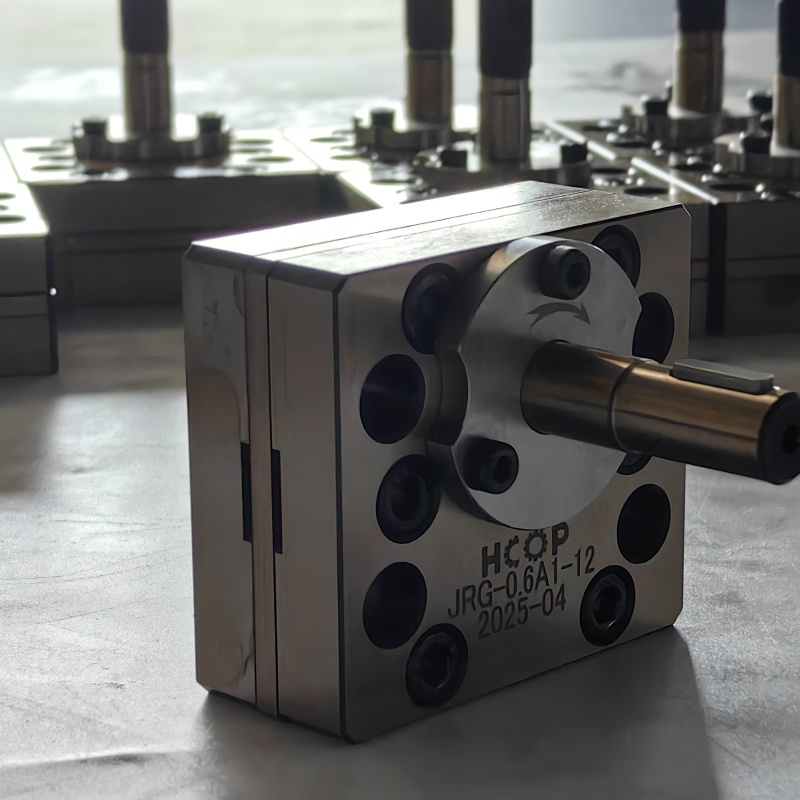


Gear metering pumps, as the core equipment in the field of precision fluid transportation, occupy a place in many industrial scenarios with their unique working principles. However, like any technology, it is not omnipotent, and there are inherent limitations behind its outstanding performance. Thoroughly analyzing its advantages and disadvantages can help make the most reasonable choices in practical applications.
1. The significant advantages of gear metering pumps
Excellent measurement accuracy and repeatability: This is the core advantage of gear metering pumps. As a positive displacement pump, the volume of fluid discharged per rotation is fixed. This feature enables it to provide extremely constant and predictable flow under stable operating conditions, with high measurement accuracy and good repeatability. For chemical reactions, food additives, or drug filling that require strict proportioning, this precision is the lifeline to ensure product quality.
Powerful high viscosity medium transport capability: Unlike centrifugal pumps, the transport capability of gear pumps comes from the mechanical compression of fluids by gears. The output pressure mainly depends on the resistance of the backend system, and is not closely related to the viscosity of the fluid. Therefore, it is very good at transporting high viscosity and non Newtonian fluids such as polymer melts, resins, paints, heavy oils, etc., and the flow rate will not significantly decrease due to the increase in viscosity.
Compact structure and stable output pressure: The gear pump has a simple and sturdy structure, small size, and high power density, and can provide strong output pressure within a limited installation space. The fluid output is continuous and stable, with relatively small pulsation (especially in the design of helical or herringbone gears), which provides good conditions for processes that require stable coating or gluing.
Easy to operate and relatively easy to maintain: Its driving principle is simple, and the speed and flow rate usually have a good linear relationship, making it easy to control through means such as frequency converters. Meanwhile, due to its high degree of structural standardization, once a failure occurs, the main vulnerable parts (such as gears and shaft sleeves) can be easily replaced, and maintenance costs are relatively controllable.
2. The inherent disadvantages of gear metering pumps
Extremely sensitive to solid particles and pollution: this is its main weakness. The clearance between gears, pump casings, and various components is extremely small to ensure high precision. Once the fluid contains hard particles or impurities, it is highly likely to cause gear jamming, tooth surface wear, or seal failure, which not only permanently reduces accuracy, but may even instantly damage the pump body.
Inherent pulsation and noise exist: spur gears cause instantaneous velocity changes in the fluid during meshing and disengagement, resulting in inevitable flow pulsation and pressure fluctuations. This may become an interference factor in higher precision applications and also cause operational noise, especially under high-speed and high-pressure conditions.
Gear meshing generates shear force: During the rotation and meshing process, gears will apply high shear force to the fluid. This is unfavorable for some shear sensitive media, such as the structure of polymer chain may be destroyed, lotion may be demulsified, or some additives may fail. Therefore, careful evaluation is required when handling such materials.
There is self limitation and pressure limitation: Gear pumps belong to "fixed displacement" pumps, and their maximum output pressure is determined by the torque of the driving device. To prevent motor overload or pump damage, a safety valve must be installed at the outlet end. In addition, continuous work under extremely high pressure will exacerbate the wear of gears and bearings, affecting their service life.
In summary, gear metering pumps are a "precision double-edged sword". It performs well in situations where precise and stable transportation of high viscosity media is required, but its application effectiveness greatly depends on the cleanliness and compatibility of the media. When selecting a product, users must weigh its high precision, strong conveying capacity, high requirements for medium cleanliness, and the presence of shear effects to ensure that its working characteristics perfectly match the specific process requirements, in order to maximize its efficiency.